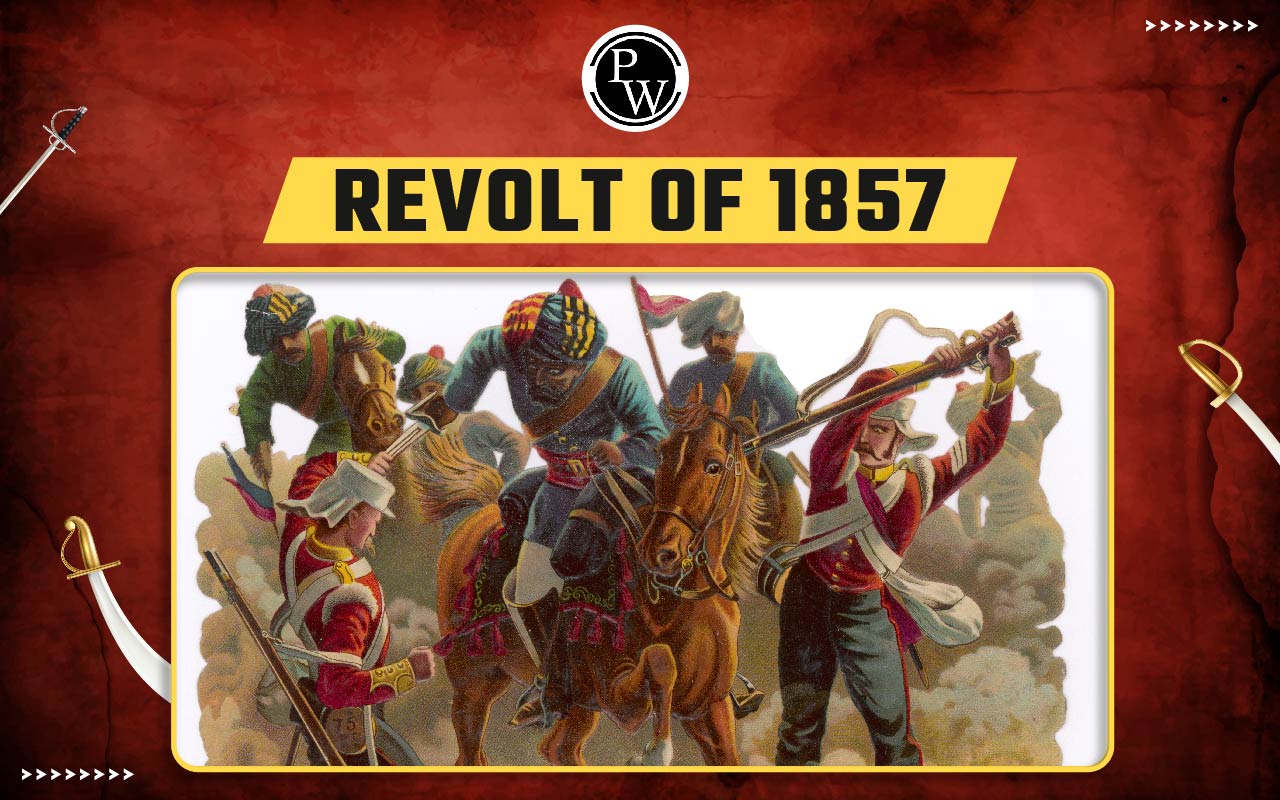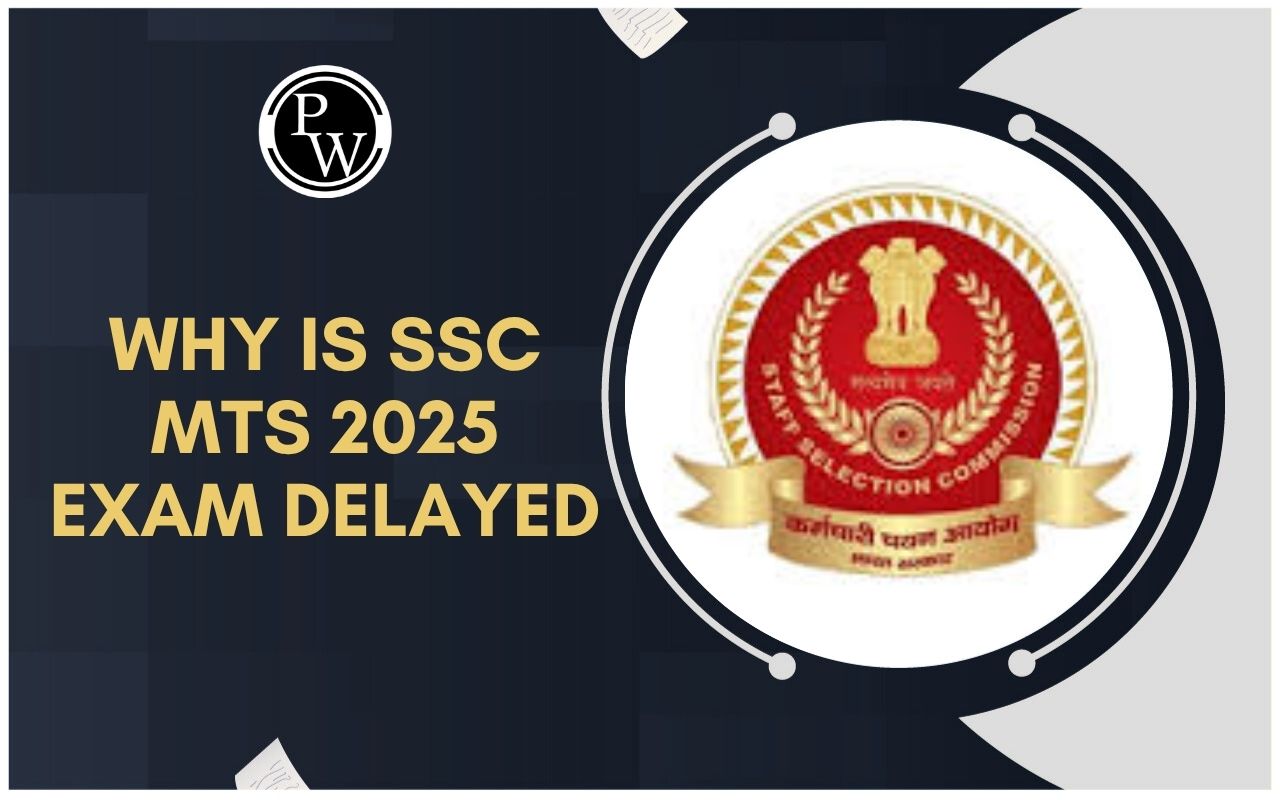

Revolt of 1857: The 1857 revolt marked a significant turning point in India's struggle against British rule. It began in Meerut on May 11, 1857, and quickly spread to various regions, eventually evolving into a full-scale rebellion against the British authorities. The main goal of the rebels was to make the British leave India.
Although the rebellion was eventually suppressed after a prolonged struggle, its effects on Indian history were profound. It demonstrated to the people of India that they could unite to challenge British rule and served as an inspiration for future generations in their fight for independence.What is the Revolt of 1857 ?
The Revolt of 1857, also known as the First War of Independence, was a significant rebellion against British colonial rule in India. This uprising happened for several reasons, such as economic exploitation, cultural oppression, and the ill-treatment of Indian soldiers. The Revolt of 1857 marked a major moment in the widespread anger and discontent against British rule in India.Causes of Revolt of 1857
The Revolt of 1857 in India happened for many reasons. It can be divided into political, economic, and social causes. Let's look at these causes more only.Political Reasons for the Revolt of 1857
The Revolt of 1857 was sparked by popular dissatisfaction with British government policies that weakened Indian rulers' authority and customs. These policies not only insulted the ruling class, but also weakened India's sociopolitical fabric, causing widespread discontent. Among the main political factors are:
- People in India didn't like how the British ruled India, and they had no say in the government.
- Indian soldiers (sepoys) were treated badly by the British, and they didn't like the British taking over a rich kingdom called Oudh.
- Indians thought the British were using India for their benefit and not respecting Indian culture.
- Many British officials were corrupt, which made the Indian people angry.
Economic Causes of the Revolt of 1857
A major factor in the start of the Revolt of 1857 was the widespread poverty and dissatisfaction among Indians brought on by British economic policies. The local population suffered as a result of these policies, which destroyed established economic structures and favored the British.
- British policies made many Indians poor and jobless because they taxed heavily and controlled India's wealth.
- Indian farmers lost their land and jobs because of British policies.
- More people were without jobs, and that made them unhappy.
- British trade rules hurt traditional Indian businesses and made the economy worse.
Socio-Economic Causes
The Revolt of 1857 was sparked by broad social dissatisfaction in many areas of Indian society. British policies and reforms destroyed ancient conventions, social structures, and religious practices, developing a strong sense of separation and hostility toward colonial rule.
-
Heavy land revenue demands ruined peasants.
-
British destroyed traditional handicrafts and industries.
-
Widespread unemployment and poverty increased resentment.
-
Farmers forced to grow cash crops instead of food grains.
-
Unjust land policies dispossessed peasants and zamindars.
-
Traditional rulers and nobles lost their power and privileges.
-
Continuous economic drain from India to Britain.
-
British interference disrupted traditional social systems.
-
Moneylenders exploited peasants, causing indebtedness.
-
General economic hardship affected all sections of society.
Military Causes of the Revolt
Before the revolt, Indian soldiers were not paid well and were treated unfairly. They felt the British didn't appreciate their loyalty. The revolt started because of a new rifle with cartridges believed to go against the religious beliefs of Hindu and Muslim soldiers.
-
Indian soldiers (sepoys) were paid much less than British soldiers.
-
Indian sepoys had little chance of promotion or higher ranks.
-
British officers often showed racial discrimination and disrespect.
-
Soldiers were sent to fight in foreign lands, hurting their religious beliefs.
-
The introduction of the Enfield rifle with greased cartridges offended both Hindus and Muslims.
-
Disbanding of native armies after annexations created widespread resentment.
-
Lack of respect for Indian traditions and customs in the army.
-
Harsh punishments and strict discipline caused discontent.
-
Reduction in batta (foreign service allowance) lowered soldiers’ income
Revolt of 1857 SSC Notes PDF
The Revolt of 1857, India's first significant challenge to British authority, led to widespread conflicts. It included leaders like Rani Lakshmibai and political, economic, and social problems. Despite its failure, it marked a significant moment in India's struggle for independence. For a better understanding, here is a PDF of the SSC Notes for the Revolt of 1857:
Timeline of the Revolt of 1857
The major events that led to the Revolt of 1857 started as small-scale military disputes and quickly grew into a widespread revolt.
This timeline shows the important events, actions, and results that influenced the uprising, from Mangal Pandey's rebellion in Barrackpore to the mass revolutions across North and Central India. In this section, the timeline of the Revolt of 1857 given below:
|
Timeline of the Revolt of 1857 |
||
|---|---|---|
| Date | Event | |
| 29th March 1857 | Mangal Pandey’s Revolt |
Mangal Pandey, stationed at Barrackpore, revolts against British officers and is hanged. बैरकपुर में तैनात मंगल पांडे ने ब्रिटिश अधिकारियों के खिलाफ विद्रोह किया और उसे फांसी दे दी गई। |
| 24th April 1857 | Meerut Revolt |
Ninety sepoys of the Third Native Cavalry refuse to use greased cartridges, leading to their dismissal. तृतीय देशी घुड़सवार सेना के नब्बे सिपाहियों ने चर्बीयुक्त कारतूसों का उपयोग करने से इनकार कर दिया, जिसके कारण उन्हें बर्खास्त कर दिया गया।
|
| 9th May 1857 | Imprisonment of Sepoys |
85 sepoys are sentenced to imprisonment, fueling unrest in the army. 85 सिपाहियों को कारावास की सजा सुनाई गई, जिससे सेना में अशांति फैल गई।
|
| 10th May 1857 | Revolt in Meerut |
The sepoys in Meerut revolt and march towards Delhi, freeing their comrades and killing British officers. मेरठ के सिपाहियों ने विद्रोह कर दिया और दिल्ली की ओर कूच कर दिया, अपने साथियों को मुक्त करा लिया और ब्रिटिश अधिकारियों को मार डाला।
|
| May 1857 | March to Delhi |
The sepoys, along with civilians, march towards Delhi, declaring Bahadur Shah II as Emperor. सिपाही, नागरिकों के साथ, बहादुर शाह द्वितीय को सम्राट घोषित करते हुए दिल्ली की ओर कूच करते हैं।
|
| June 1857 | Nana Saheb’s Leadership |
Nana Saheb leads the revolt in Kanpur, capturing British officers and declaring himself the Peshwa. नाना साहब ने कानपुर में विद्रोह का नेतृत्व किया, ब्रिटिश अधिकारियों को पकड़ लिया और स्वयं को पेशवा घोषित कर दिया।
|
| June – July 1857 | Lucknow and Cawnpore |
The revolt spreads across North India, with major uprisings in Lucknow and Cawnpore. यह विद्रोह पूरे उत्तर भारत में फैल गया, जिसमें लखनऊ और कानपुर में प्रमुख विद्रोह हुए।
|
| August 1857 | Gwalior |
Rani Lakshmibai of Jhansi and Tatya Tope attempt to capture Gwalior from the British. झांसी की रानी लक्ष्मीबाई और तात्या टोपे ने अंग्रेजों से ग्वालियर पर कब्जा करने का प्रयास किया
|
| September 1857 | Delhi Siege |
The British begin a siege of Delhi, aiming to regain control after the sepoy-led rebellion. सिपाहियों के नेतृत्व में हुए विद्रोह के बाद पुनः नियंत्रण पाने के उद्देश्य से अंग्रेजों ने दिल्ली की घेराबंदी शुरू कर दी।
|
| March 1858 | Revolt Suppressed |
The British, under General Havelock, retake Cawnpore, and the revolt is crushed in most regions. जनरल हैवलॉक के नेतृत्व में अंग्रेजों ने कानपुर पर पुनः कब्जा कर लिया और अधिकांश क्षेत्रों में विद्रोह को कुचल दिया गया।
|
| 1858 | End of Revolt |
The British officially suppress the revolt, and the East India Company is replaced by direct British rule. अंग्रेजों ने आधिकारिक तौर पर विद्रोह को दबा दिया और ईस्ट इंडिया कंपनी के स्थान पर प्रत्यक्ष ब्रिटिश शासन स्थापित हो गया।
|
Leaders of Revolt of 1857
During the time when the British ruled India, many leaders from various parts of the country united to oppose the East India Company and the British government. The famous leaders of Revolt of 1857 are as follows:
|
Leaders of Revolt of 1857 |
|
| Centres of Revolt | Leaders Associated with the 1857 Revolt |
| Delhi | Bahadur Shah II |
| Jhansi & Gwalior | Lakshmi Bai & Tantia Tope |
| Kanpur | Nana Saheb |
| Allahabad and Banaras | Maulvi Liyakat Ali |
| Bareilly | Khan Bahadur Khan |
| Lucknow | Begum Hazrat Mahal |
| Bihar | Kunwar Singh |
Impact of Revolt of 1857
The Rebellion of 1857 had significant effects on both the British Empire and India. It was a massive protest against British rule in India and had several important outcomes:
- The Rebellion of 1857 made Indians feel proud and united. It was a crucial moment in Indian history and showed that people in India wanted to be free from British rule.
- It played a key role in the growth of Indian nationalism, setting the stage for future movements that aimed for India's independence.
- Influential Indian leaders like Mahatma Gandhi and Jawaharlal Nehru found inspiration in the rebellion. Their efforts contributed to the cause of Indian independence.
- The Rebellion of 1857 made the British government reevaluate its policies in India. It led to reforms that addressed the root causes of the rebellion.
- In 1858, the Government of India Act was passed, ending the rule of the East India Company and marking the beginning of direct British government control in India.
Failures of Revolt of 1857
In 1857, many Indians tried to fight against the British who ruled India. They wanted freedom. But, their effort didn't work for a few important reasons.
- No Teamwork: The people who joined the fight didn't work together. They had different ideas and no clear leader. This made it hard to succeed.
- Divided Indian Rulers: The Indian kings and nobles couldn't agree on what to do. They didn't form a strong group against the British. This was a big problem.
- Strong British Army: The British had a better, more organized army. They could defeat the Indian fighters easily. The Indian fighters didn't have good weapons or training, so they couldn't fight back.
- Not Enough Support: The fight mostly happened in northern India. People in other parts of the country didn't join in. This lack of support made it hard for the fight to succeed."
Consequences of Revolt of 1857
The rule of the East India Company in India ended because of a big uprising. From that time, India was ruled directly by the British Crown.
- End of East India Company: After the revolt, the British Crown took control of India, and the East India Company's rule ended.
- Changes in Policies: The British government made some changes to make things better for Indians. They made new rules and respected Indian traditions more.
- Indian Nationalism: The revolt made many Indians feel like they were part of a bigger group and inspired them to keep fighting against the British rulers.
- Cultural Impact: The revolt also made Indians proud of their culture and they started rejecting British culture.
- Change in Colonial Policies: The British started being more careful and practical in how they ruled India. They understood the importance of getting support from the local people.
| Other Related Links | |
| Tiger Reserves in India | National Parks in India |
| Biosphere Reserves in India | Elephant Reserves in India |
Revolt Of 1857 FAQs
Q1. Who started the Revolt of 1857?
Q2. What was the main cause of 1857 revolt?
Q3 What does the Revolt of 1857 explain?
Q4 Who was the duration of 1857 revolt?












